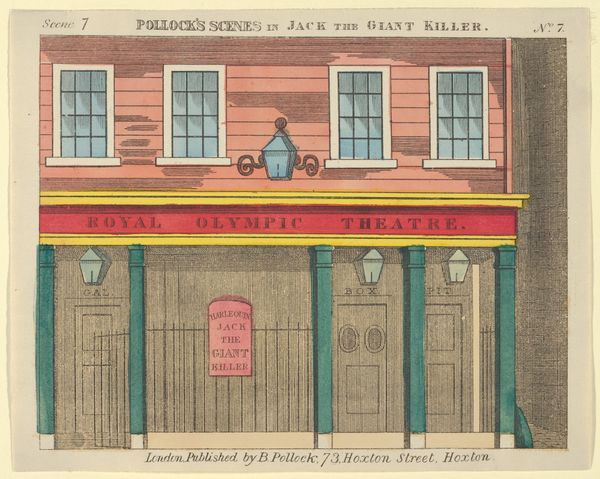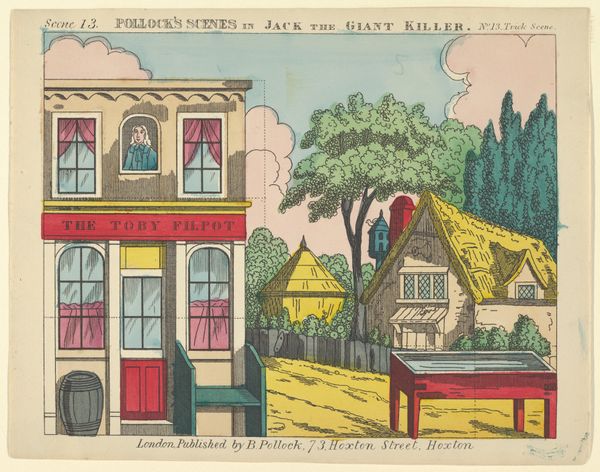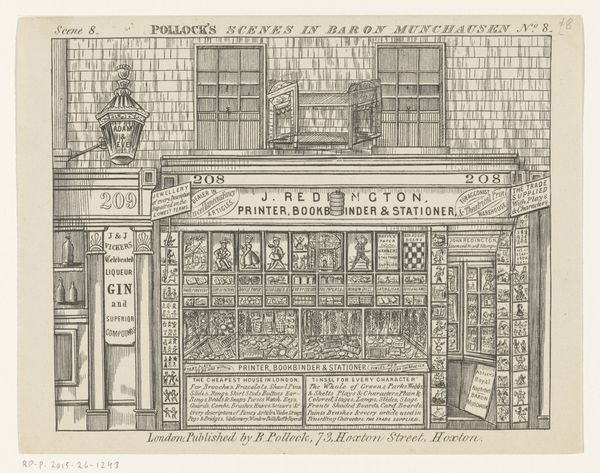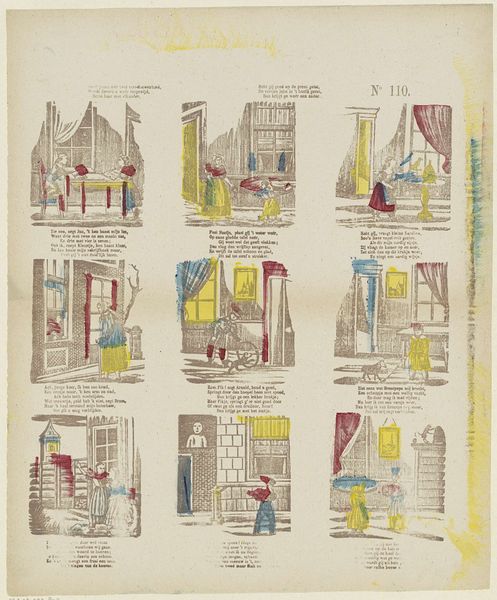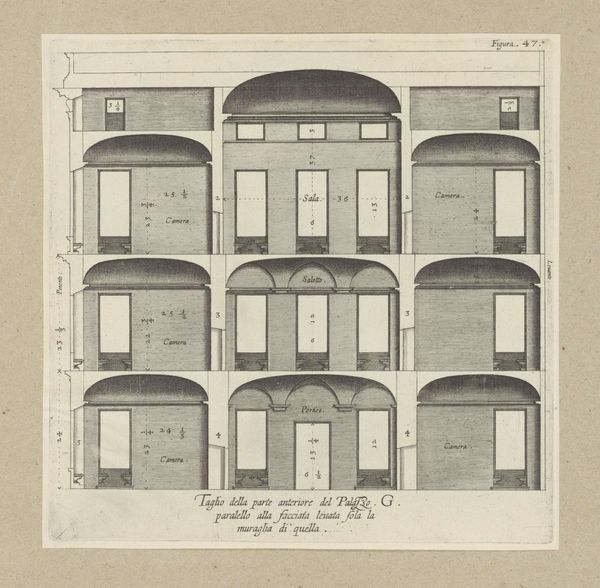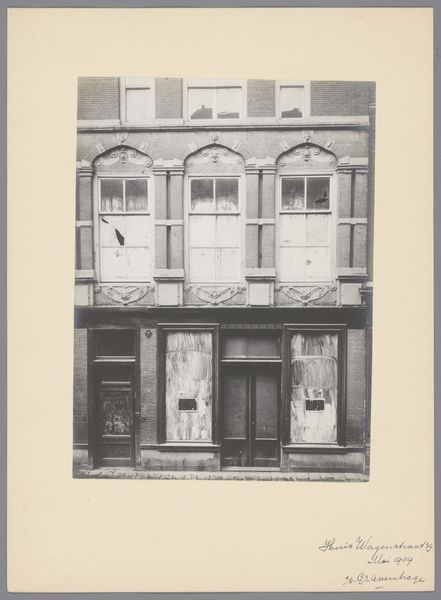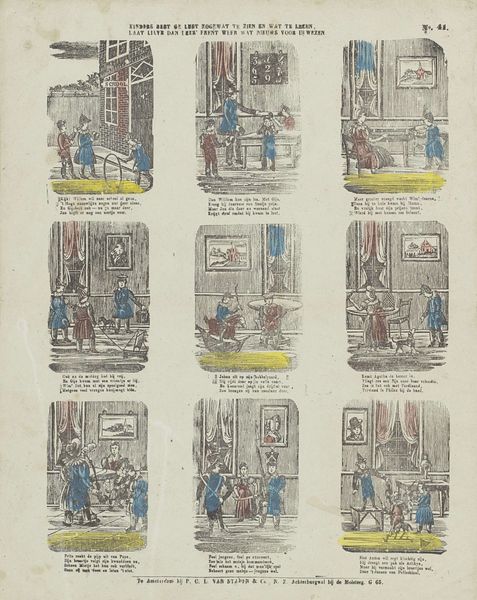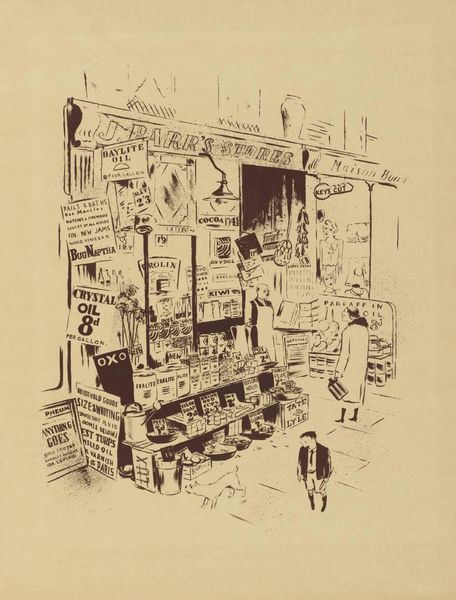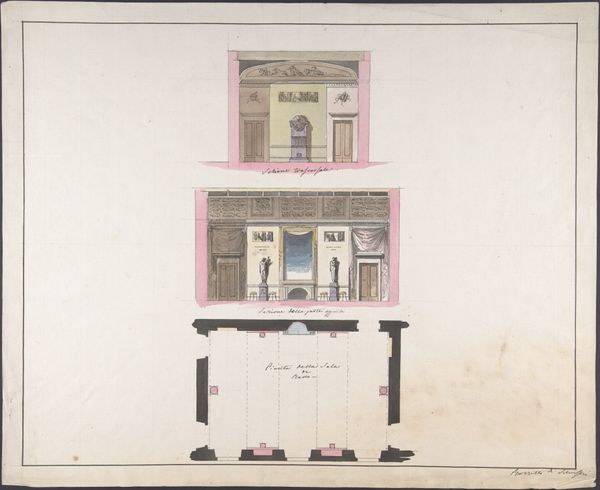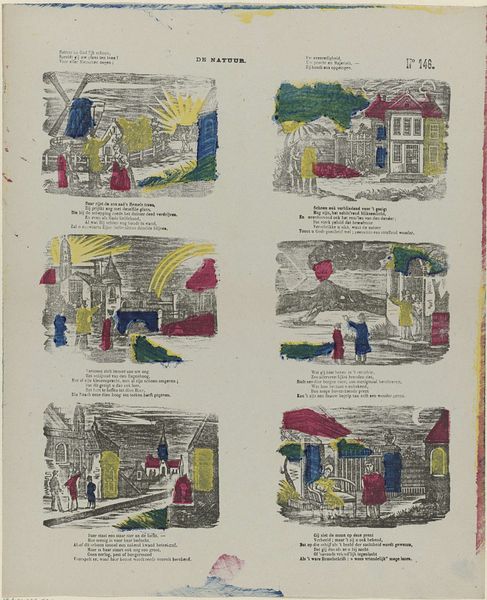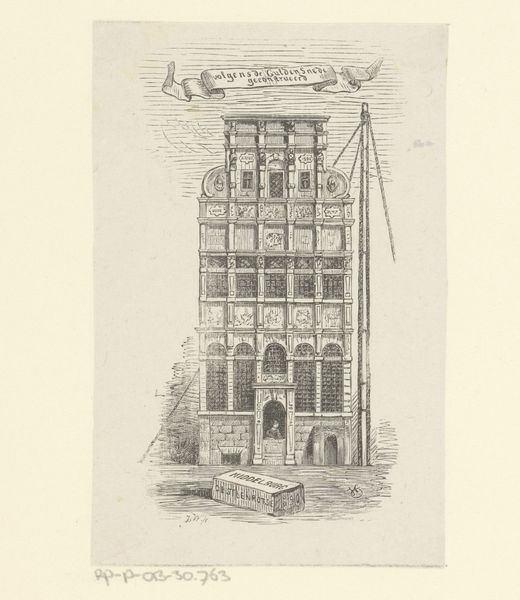
Scene 9, from Jack and the Giant Killer, Scenes for a Toy Theater 1870 - 1890
0:00
0:00
drawing, print, etching
#
drawing
#
narrative-art
#
comic strip
#
parchment
# print
#
etching
#
comic
#
cityscape
#
history-painting
Dimensions: Sheet: 6 11/16 × 8 7/16 in. (17 × 21.4 cm)
Copyright: Public Domain
Editor: This print, "Scene 9, from Jack and the Giant Killer, Scenes for a Toy Theater," likely dating from 1870 to 1890 by Benjamin Pollock, presents a quaint street scene. I’m struck by how ordered and theatrical it feels, like looking at a stage set. How do you interpret this work in its historical context? Curator: It’s crucial to acknowledge that this print exists within a lineage of popular entertainment designed for domestic spaces. These "toy theaters" weren't simply children's playthings. Consider how the rise of consumer culture in the Victorian era intersects with notions of domesticity and gender roles. The miniature theater allowed families, particularly women, a sanctioned space for creativity and perhaps even subversive performances within the home. Notice the spirit merchant and surgeon – how might these professions, visually presented, speak to anxieties and realities of Victorian society? Editor: That’s interesting! I hadn't considered the performative aspect and how that might relate to gender. Were these kinds of prints widely accessible? Curator: Access would depend on socioeconomic standing, but the mass production of such prints suggests a fairly widespread appeal. Think about the role of spectacle and visual culture in shaping societal norms. What stories are being told, and who has the power to tell them? Is there anything about the figure of "Jack" or the giant that might hint at broader social or political commentary? Are these stories ways of negotiating class anxieties, national identity or gender dynamics? Editor: It’s fascinating to think about this seemingly simple print as a site of complex cultural negotiations. I initially saw it as charming but now appreciate how it reflects so many different aspects of Victorian society. Curator: Precisely! It’s about recognizing the inherent complexities within the everyday, and understanding how seemingly innocuous objects can reveal much about the social fabric from which they emerge.
Comments
No comments
Be the first to comment and join the conversation on the ultimate creative platform.
